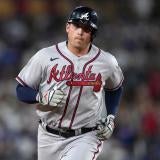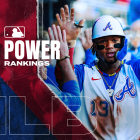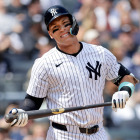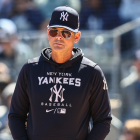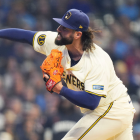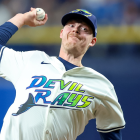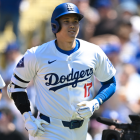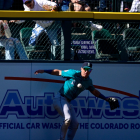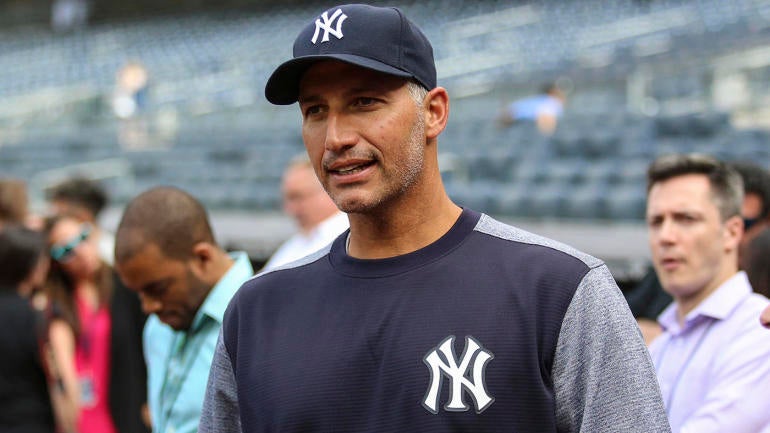
Just a few voting cycles remain before I get my first official BBWAA Hall of Fame ballot. I've already revealed what my ballot would have looked this time around and it did not include a few starting pitchers I'm going to highlight here. I am, however, always willing to reconsider and I'm certainly willing to discuss when the situation merits discussion.
In terms of starting pitcher and how the position is evolving, I believe there is a discussion to be had. It's now been six years since I wrote that an entire generation of starting pitchers weren't getting their due in Hall of Fame voting. Do you know how many have gotten in since then via the BBWAA route? Two: Roy Halladay and Mike Mussina.
That is to say, nothing has really changed.
In looking forward to the next several years, the only retired player who I believe will make a dent is CC Sabathia. I'm hopeful, but definitely not confident, in the chances of Jon Lester. Among active players, there is a trio of surefire Hall of Famers in Justin Verlander, Max Scherzer and Clayton Kershaw. Zack Greinke seems probable. That's about it, though, right?
And with relief specialists becoming more and more prominent in addition to things like the opener, it's easy to see the number of Hall of Fame starting pitchers continue to dwindle. It's been headed in this direction since the advent of the designated hitter, actually. Pitchers of the 1980s are drastically under-represented in the Hall of Fame and not a ton has changed since.
I don't think there would be much argument when I say that during any individual game, pitcher is the most important position on the field. And while the individual on the mound is constantly changing, do we really want to move to a place where those who perform the most important task on the field are the least represented in the Hall of Fame? That doesn't seem just.
All this is to say, perhaps our standards for Hall of Fame pitchers need to be altered. It's probably not just as simple as putting in Curt Schilling and Roger Clemens and getting a vet committee to add Johan Santana and Kevin Brown, either. No, it seems like we need to start with a trio of arms on the ballot right now.
Mark Buehrle
Buehrle was never viewed as an elite pitcher and we can say the same of the next two names we'll see in subheads below.
We've been over this many times, however. The Hall of Fame isn't only upper-tier, elite, inner-circle all-time greats. It's not just Walter Johnson, Cy Young and Tom Seaver types. There are also Bob Lemon, Jim Bunning and Dazzy Vance types. This isn't an insult. It's a statement of fact. A good number of people I come across on social media seem to believe it's either only the Walter Johnson's or that it should only be those types. That's just not how it is. It's a museum, not a short list of the inner-circle elite.
Buehrle's case for an appearance in the museum lies in his career as a workhorse. In 2001, at age 22, Buehrle threw 221 1/3 innings. In 2015, at age 36, he ended up at 198 2/3 innings. He fell just 1 1/3 innings shy of 200 and that was the first time since 2000 he failed to reach the two-century mark. He strung together 14 consecutive 200-inning campaigns.
In the wild-card era (1995-present), here are the pitchers with the most 200-inning seasons:
1. Buehrle, 14
2. Verlander, 12
3. Greg Maddux, 11
4. Six players tied at 10
Buehrle ended his career 214-160 with a 3.81 ERA (117 ERA+). He made five All-Star Games and won four Gold Gloves. He won the World Series with the 2005 White Sox. Most of all, though, he was the biggest workhorse of his generation. He took the ball every five days and provided such volume for his team that he ranks 97th in career innings pitched and 65th in career pitcher WAR.
Andy Pettitte
Pettitte has a decidedly old-school case. He won 256 games in his career, good for 42nd all-time and ahead of a good number of Hall of Famers. He was a part of a ridiculous eight pennant-winning teams and won five World Series rings. In 44 postseason starts, he went 19-11 with a 3.81 ERA. He won an ALCS MVP.
Though he wasn't Buehrle, Pettitte was also a workhorse. In that 200-plus innings pitched leaderboard above, Pettitte was one of the "six players tied at 10." He ranks 91st in career innings and 63rd in pitcher WAR, nudging out Buehrle in both. He was only a three-time All-Star, but he got more Cy Young love than Buehrle, finishing second once and in the top six five times. He also missed a lot more bats, finishing with 2,448 strikeouts, good for 46th in history.
Also, Pettitte is the career leader in postseason wins and innings pitched. He is fourth in strikeouts. Perhaps there are bonus points for playoff performance here.
Tim Hudson
Hudson was a four-time All-Star with four top-six Cy Young finishes, including the runner-up in 2000. He wasn't quite the consistent workhorse Buehrle and Pettitte were, but he had eight 200-inning seasons and had five of at least 220. He actually went over 235 three times and in the wild card era, only Randy Johnson, Roy Halladay, CC Sabathia and Curt Schilling had more such seasons.
Hudson went over 3,000 innings (he's 119th all-time) and 2,000 strikeouts (he's 74th) and sits 77th in career pitcher WAR.
He was a very good pitcher for a long time who provided so much value and volume to his teams. He went 222-133 in his career, with the .625 winning percentage meaning his teams played like 101-win teams throughout his entire career when he took the ball. He played on seven different playoff teams, pitching in the rotation for the 2014 World Series champion Giants.
As noted, I have none of the three on my current ballot, but I'm open to changing. As we see the starting pitcher position evolve, these three illustrate the workhorse that is becoming a thing of the past and I have a greater appreciation for such pitchers the more time passes. Especially if pitchers in the designated hitter era continue to be short-changed in Hall of Fame voting, these three are worth a longer look.








